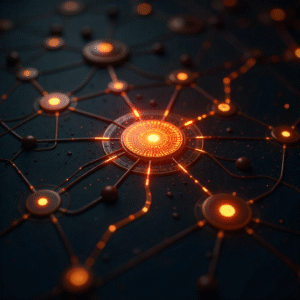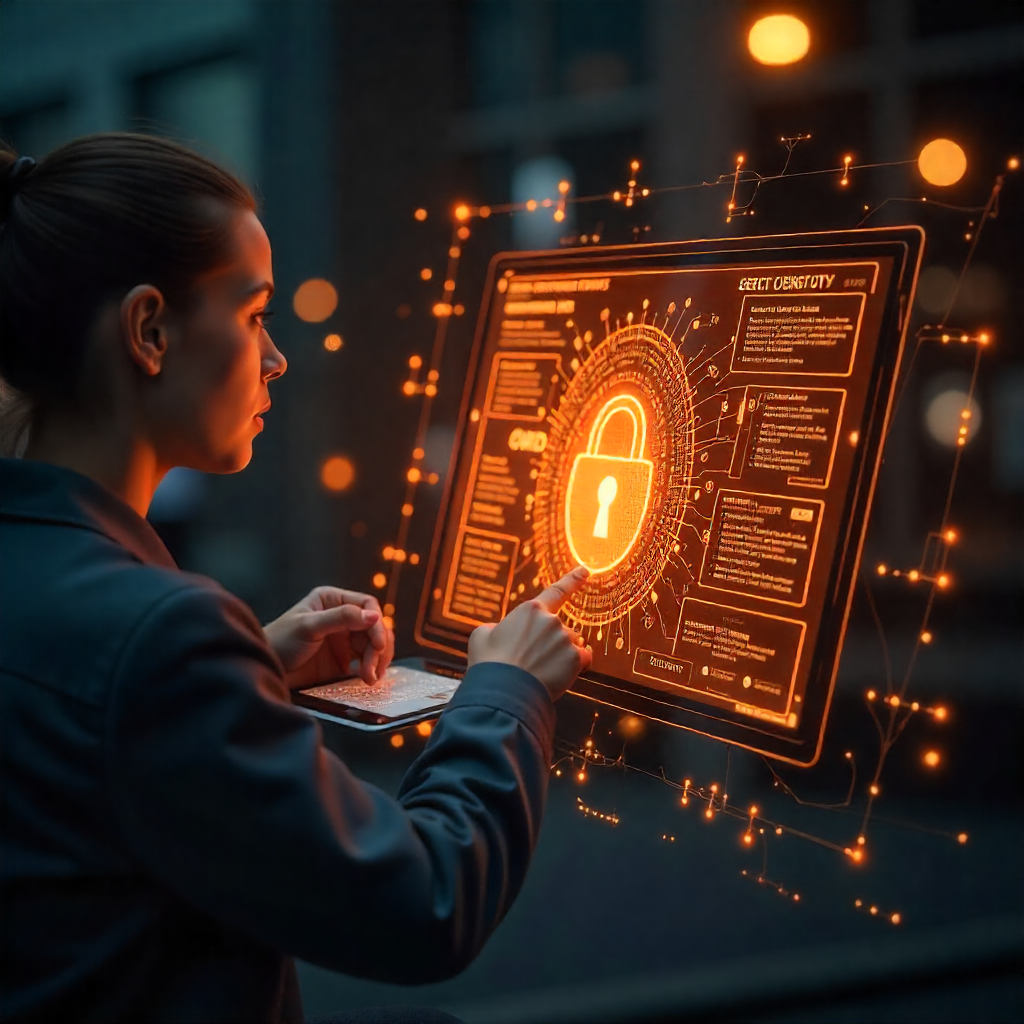Introduction
Table of Contents
ToggleIn today’s rapidly evolving digital landscape, AI information security has emerged as a vital component in safeguarding sensitive data from cyber threats. As we rely more on technology for our daily operations, understanding the implications of artificial intelligence on information security is crucial. This comprehensive guide will delve into the nuances of AI information security, its benefits, challenges, and the future landscape of cybersecurity.

Table of Contents
- Introduction to AI Information Security
- Why AI is Essential in Information Security
- Key Components of AI Information Security
- Benefits of AI in Information Security
- Challenges and Risks
- AI Information Security Frameworks
- Future Trends in AI Information Security
- Case Studies: AI in Action
- FAQs
- Conclusion
Introduction to AI Information Security <a name=”introduction”></a>
AI information security refers to the integration of artificial intelligence technologies into cybersecurity practices to enhance the protection of data and systems. With cyber threats becoming increasingly sophisticated, traditional security measures are often inadequate. AI offers a proactive approach to identifying and mitigating risks, making it an indispensable tool for organizations of all sizes.
In this digital age, the stakes are high. Cyberattacks can lead to severe financial losses, reputational damage, and legal liabilities. Therefore, leveraging AI in information security is not just a trend; it’s a necessity.
Why AI is Essential in Information Security <a name=”why-ai-essential”></a>
1. Evolving Threat Landscape
Cybercriminals are constantly adapting their tactics to exploit vulnerabilities. AI algorithms can analyze vast amounts of data in real time, enabling organizations to stay one step ahead of potential threats. The speed at which AI can process information allows for immediate detection of unusual activities, often before they escalate into full-blown attacks.
2. Enhanced Detection Capabilities
AI systems can detect anomalies and patterns that might indicate a security breach. This capability allows for quicker responses to threats, minimizing potential damage. For instance, machine learning models can be trained to recognize normal user behavior, making it easier to identify deviations that may signify malicious activity.
3. Automation of Security Processes
AI automates repetitive security tasks, freeing up human resources to focus on more strategic initiatives. This efficiency is crucial for organizations that need to allocate resources wisely. Automated systems can handle tasks such as log analysis, intrusion detection, and vulnerability assessments, significantly reducing the burden on IT teams.
4. Predictive Analytics
With the ability to analyze historical data, AI can provide predictive insights that help organizations prepare for potential threats. By identifying trends and patterns, AI can help forecast future attacks, allowing businesses to implement preventive measures proactively.

Key Components of AI Information Security <a name=”key-components”></a>
1. Machine Learning
Machine learning, a subset of AI, enables systems to learn from data and improve over time. It is instrumental in identifying patterns of behavior that may signify a security risk. For example, machine learning algorithms can analyze user login patterns to detect unauthorized access attempts.
2. Natural Language Processing (NLP)
NLP allows AI systems to understand and interpret human language. This technology can be applied to analyze security reports, social media, and other text sources to identify potential threats. By processing vast amounts of unstructured data, NLP can uncover insights that may not be evident through traditional analysis.
3. Behavioral Analysis
Behavioral analysis involves monitoring user behavior to identify anomalies that may indicate security threats. AI can assess user actions in real time, allowing for immediate alerts when suspicious activity is detected. This is particularly useful in preventing insider threats and credential misuse.
4. Automated Response Systems
AI can facilitate automated responses to security incidents. For instance, if an anomaly is detected, the system can automatically isolate affected systems or block suspicious IP addresses, minimizing the damage while human analysts investigate the situation.
Benefits of AI in Information Security <a name=”benefits”></a>
- Proactive Threat Detection: AI systems can identify threats before they escalate, significantly reducing response times and potential damage.
- Cost Efficiency: By automating security processes, organizations can save on labor costs and reduce the need for extensive security teams. This allows companies to allocate their resources more effectively.
- Improved Accuracy: AI minimizes false positives, allowing security teams to focus on genuine threats rather than sifting through irrelevant alerts. This leads to more effective incident response and resource allocation.
- Scalability: AI solutions can scale with the organization, adapting to increasing amounts of data and evolving threat landscapes. As businesses grow, their security measures can evolve without requiring a complete overhaul.
- Enhanced Decision-Making: AI provides actionable insights that help organizations make informed decisions about their security strategies. By analyzing data trends, AI can guide resource allocation and risk management efforts.
- 24/7 Monitoring: AI systems can operate continuously without downtime, ensuring that threats are monitored in real-time, even outside of regular business hours.

Challenges and Risks <a name=”challenges”></a>
While AI information security offers numerous benefits, it is not without challenges:
- Data Privacy Concerns: The use of AI in security raises questions about data privacy and the ethical use of personal information. Organizations must ensure compliance with regulations such as GDPR and CCPA.
- Complexity of Implementation: Integrating AI solutions into existing security frameworks can be complex and resource-intensive. Organizations may face challenges in aligning their current systems with new AI technologies.
- Dependence on Quality Data: AI systems require high-quality data to function effectively. Poor data can lead to inaccurate predictions and responses, undermining the effectiveness of AI-driven security measures.
- Emerging Threats: As AI technology evolves, so do the tactics of cybercriminals. Organizations must remain vigilant and continuously update their security measures to address new vulnerabilities.
- Skill Shortages: The rapid advancement of AI technologies has led to a shortage of skilled professionals who can effectively implement and manage these systems. Organizations may struggle to find talent with the necessary expertise.
AI Information Security Frameworks <a name=”ai-frameworks”></a>
To effectively implement AI in information security, organizations can adopt various frameworks that guide the integration of AI technologies into their cybersecurity strategies. Here are a few notable frameworks:
1. NIST Cybersecurity Framework
The National Institute of Standards and Technology (NIST) Cybersecurity Framework provides a policy framework of computer security guidance for how private sector organizations can assess and improve their ability to prevent, detect, and respond to cyber attacks. Integrating AI into this framework can enhance the detection and response capabilities of organizations.
2. MITRE ATT&CK Framework
The MITRE ATT&CK framework is a knowledge base of adversary tactics and techniques based on real-world observations. This framework can be augmented with AI to improve threat detection and response strategies, allowing organizations to model and simulate potential attack scenarios.
3. ISO/IEC 27001
ISO/IEC 27001 is an international standard for information security management systems (ISMS). Organizations can integrate AI technologies into their ISMS to strengthen their security posture and ensure compliance with industry standards.
Future Trends in AI Information Security <a name=”future-trends”></a>
- Increased Collaboration Between AI and Human Analysts: The future of AI information security will see greater collaboration between AI systems and human analysts, combining the strengths of both. While AI can handle data analysis and threat detection, human expertise will remain essential for strategic decision-making and incident response.
- AI-Driven Threat Intelligence: Organizations will increasingly rely on AI to gather and analyze threat intelligence, providing a more comprehensive understanding of the threat landscape. AI will be able to correlate data from various sources, enhancing situational awareness.
- Regulatory Compliance: As data protection regulations evolve, AI will play a crucial role in helping organizations comply with legal requirements. Automated compliance checks and reporting will become standard practice.
- Integration with IoT Security: With the rise of the Internet of Things (IoT), AI will become essential in securing connected devices and networks. AI systems will monitor IoT environments for vulnerabilities and potential attacks, ensuring the security of these increasingly complex ecosystems.
- Advanced Encryption Techniques: AI will contribute to the development of advanced encryption methods that protect sensitive data. These techniques will be critical in safeguarding information in an era where data breaches are commonplace.

Case Studies: AI in Action <a name=”case-studies”></a>
Case Study 1: Darktrace
Darktrace is a cybersecurity company that uses AI to detect and respond to cyber threats in real time. Its Enterprise Immune System technology mimics the human immune system, identifying anomalies within network traffic. By leveraging machine learning, Darktrace can autonomously respond to threats, reducing response times significantly.
Case Study 2: IBM Watson for Cyber Security
IBM Watson for Cyber Security integrates AI with cybersecurity measures to enhance threat detection and response. By analyzing vast amounts of unstructured data, Watson provides actionable insights that help organizations identify vulnerabilities and respond to threats more effectively.
Case Study 3: CrowdStrike
CrowdStrike is known for its AI-powered endpoint protection platform, which uses machine learning to detect and prevent cyber threats. The platform analyzes data from millions of endpoints, allowing it to identify and respond to threats in real time, significantly reducing the risk of breaches.
FAQs <a name=”faqs”></a>
1. What is AI information security?
AI information security refers to the use of artificial intelligence technologies to enhance the protection of sensitive data and systems from cyber threats. It combines advanced algorithms and machine learning techniques to detect and respond to potential security breaches.
2. How does AI improve cybersecurity?
AI improves cybersecurity by enabling proactive threat detection, automating security processes, and analyzing vast amounts of data to identify potential risks. It enhances the accuracy and speed of threat responses.
3. What are the benefits of using AI in information security?
Benefits include proactive threat detection, cost efficiency, improved accuracy, scalability, and enhanced decision-making. AI also provides 24/7 monitoring capabilities.
4. What challenges does AI face in information security?
Challenges include data privacy concerns, implementation complexity, dependence on quality data, emerging cyber threats, and skill shortages in the workforce.
5. What is the future of AI in information security?
The future will likely see increased collaboration between AI and human analysts, AI-driven threat intelligence, regulatory compliance assistance, and integration with IoT security.
Conclusion <a name=”conclusion”></a>
In conclusion, AI information security is not just a buzzword; it’s a critical component of modern cybersecurity strategies. As cyber threats continue to evolve, leveraging AI technologies will be essential for organizations aiming to protect their data and maintain trust with their customers.
At Info Vistaa, we are committed to providing you with the latest insights and information to navigate the complexities of AI in information security. Stay informed, stay secure!
Internal Links:
- Health Insurance: Your Essential Guide to Coverage, Costs, and Choices
- Online Learning Platforms: Your Gateway to Knowledge and Success
- Interested in enhancing your cybersecurity strategy? Subscribe to our newsletter for more insights!
- Have a question about AI information security? Leave a comment below, and we’ll get back to you!


1 thought on “AI Information Security: The Future of Digital Protection”